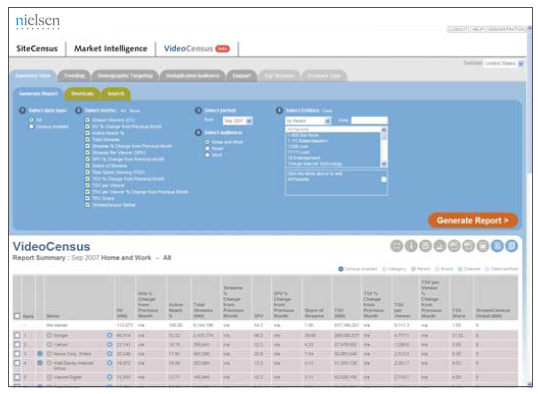

VIDEO Census OVERVIEW
VideoCensus’ methodology employs two patented assets, Nielsen’s SiteCensus content tagging technology and our desktop
meter. To drive reporting, online video publishers, technology providers and networks attach a simple piece of SiteCensus code to
their video delivery platforms. Once enabled, this code allows Nielsen to collect a precise census count of the viewing activity. The
Nielsen desktop meter, deployed to hundreds of thousands of panelist PCs worldwide, further dissects and analyzes the video data
to provide granular insight into viewer engagement with specifi c video channels, programs and clips.
How Video Census Works
1. You Tag It
Publishers tag the video player or stream with a short piece of SiteCensus code, which triggers the viewer’s
browser to ping our server with the relevant details— such as the videos’s content and origin—when the stream is viewed.
2. We Measure It
The meter technology residing on the PCs of our panelists sees the ping, or URL request, and
immediately recognizes, records and parses the URL. It extracts all relevant information, including stream/
program title, program type, publisher name and video section. This provides accurate identifi cation
and reporting of the content being viewed, because the meter is recording the counting mechanism
implemented by the publisher.
3. We Report It
VideoCensus delivers highly accurate, granular reporting of online video consumption from the U.S.
home/work audience. The tagging process also allows us to report actual or “census-based” counts in a
syndicated service.
• Viewers: Projected number of U.S. home/work users who
viewed the stream
• Streams: Number of streams viewed
• Demographics: Who is viewing the content?
• Dayparting: Metrics by time of day. Find out which time of
day your video streams are getting the most play
• Desktop Reporting: VideoCensus measures at the desktop
level (unlike other measurement services which measure at
the proxy level), and delivers time spent and other valuable
metrics
